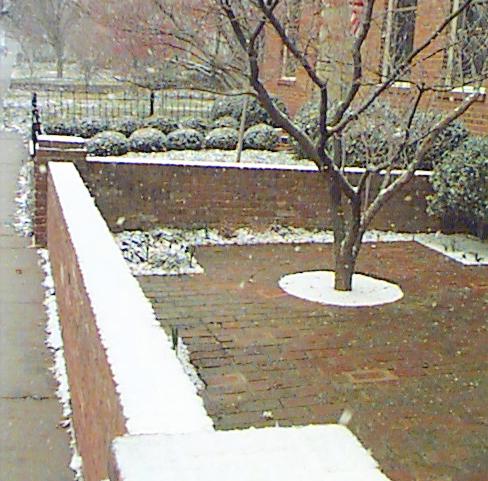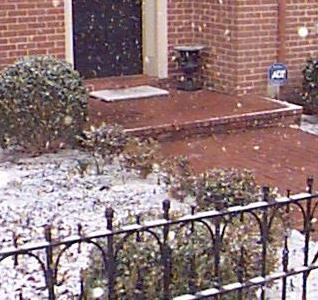
 |
The snow on the sidewalk and the brick patio melts quickly because the ground is not yet frozen. Bricks good thermal conductors, and so those in contact with the ground remain above freezing, too. The tree branches and the top of the brick wall are not in contact with the ground, and surrounded by and cooled by the cold air. So the snow on these places survives. The leaves at the foot of the wall and ivy around the base of the tree are cooled similarly: they are separated from the ground by an air space -- a good insulator -- and so their snow does not melt. |
 |
The doormat is an insulator, not having good thermal contact with the ground, so it becomes the temperature of the colder air, and remains snow covered. The brick walk and steps are good enough conductors that they are warmed by heat from the ground and snow on them melts. But notice the little line of snow right at the edge of the steps -- this region is being cooled by the air from both the top and the side, and gets cold more quickly than the rest of the bricks, so the snow survives here. |
Push the "back" button